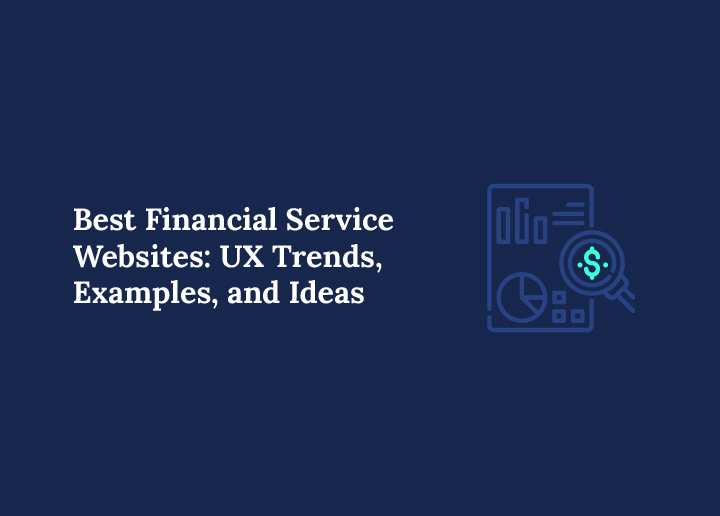The best financial service websites are no longer just online brochures; they have become powerful, user-friendly platforms that shape how people manage money, make investments, and plan for the future.
Whether accessing personal finance news, exploring investing insights providers, or learning from globally recognized magazines like the Financial Times, audiences want experiences beyond information delivery.
They want intuitive design, secure interactions, and features that empower them to stay informed and enjoy financial independence.
This guide will uncover the latest UX design trends, showcase top finance websites trusted by the world’s business leaders, and highlight actionable ideas you can apply to your financial platform. Let’s dive in if you are ready to discover what sets modern financial websites apart.
Why the Best Financial Service Websites Matter?
An exceptional financial service website is defined by more than its visual appeal. It’s a secure, fast, accessible digital portal simplifying complex financial processes.

It builds trust by being transparent and reliable and empowers users through personalized, easy-to-understand tools. In a world where consumers have countless options, a superior UX is the key to attracting and retaining customers.
UX in finance is a critical component of trust-building. A clumsy or confusing interface can create anxiety and make users question a company’s credibility.
Conversely, a clean, professional financial website design signals security and competence. This is especially true for sensitive areas like online banking, where user trust is non-negotiable.
Statistics show that up to 73% of consumers say user experience is the most important factor in their decision to stick with a digital financial service. A bad experience can be costly, as 88% of users won’t return to a website after a poor UX.
Design directly impacts user decisions. A seamless onboarding flow can dramatically increase sign-up rates. Clear, interactive charts can help users feel confident when making investment decisions.
Simple language can empower individuals to take control of their personal finances. Beyond aesthetics, security and compliance must be deeply integrated into the design.
Features like multi-factor authentication and clear privacy policies should be presented user-friendly to reassure users that their financial data is safe.
Elevate Your Financial Website Today
Transform your banking or finance platform with a secure, user-friendly, and high-converting website designed to build trust and drive engagement.
Types of Financial Service Websites and Their UX Priorities
The financial services industry includes various platforms with unique UX challenges and goals. Understanding these differences is the first step toward creating an effective website.
Personal Finance and Budgeting Websites
These websites are built to help users manage their money daily. The UX for these platforms needs to be highly engaging and motivational.
They often use gamification and visual cues to make tracking spending and setting financial goals less like a chore.
Examples like Mint and YNAB (You Need a Budget) excel by providing easy-to-use spending trackers, budget planners, and progress bars that help users visualize their journey toward financial freedom.
Investment and Wealth Management Platforms
The UX for investment platforms must focus on clarity and powerful data visualization. Users need a dashboard that simplifies the complex world of the financial markets.
This includes interactive charts, real-time data, and straightforward tools for portfolio analysis. Platforms like Betterment and Stash have become leaders by making investment strategies accessible to a broader audience.
They use a clean design to reduce intimidation and empower users with a clear view of their financial future.
Digital Banking and Fintech Platforms
These are often the most dynamic finance websites. Their UX priority is to provide a seamless, mobile-first experience.
Customers expect to manage their accounts, transfer funds, and handle transactions with the same ease as using a mobile app.
Ally Bank and SoFi are recognized world leaders in this space. They offer intuitive account management and app-like experiences that feel fast, reliable, and secure. This modern design approach is central to the new global economy.
Financial News and Market Analysis Websites
Content is the core product of financial news websites. A great resource provides not just news but also live stock market data, expert analysis, and valuable content.
The UX must prioritize content hierarchy and searchability, allowing users to find the necessary information quickly.
Globally recognized brands like Forbes and the Financial Times are great resources for the business world.
Thanks to a dedicated journalist team, their well-organized home page provides easy access to the latest business news, stock news, and real-time commentary.
Best Financial Service Websites: UX and Design Analysis
Let’s examine some of the best financial service websites and what they’re doing right. These examples are setting the standard for the industry.
SoFi
SoFi stands out as a leading innovator in the fintech space. Their website uses a vibrant, modern design that feels professional yet approachable, a deliberate choice to appeal to a younger, more tech-savvy audience.
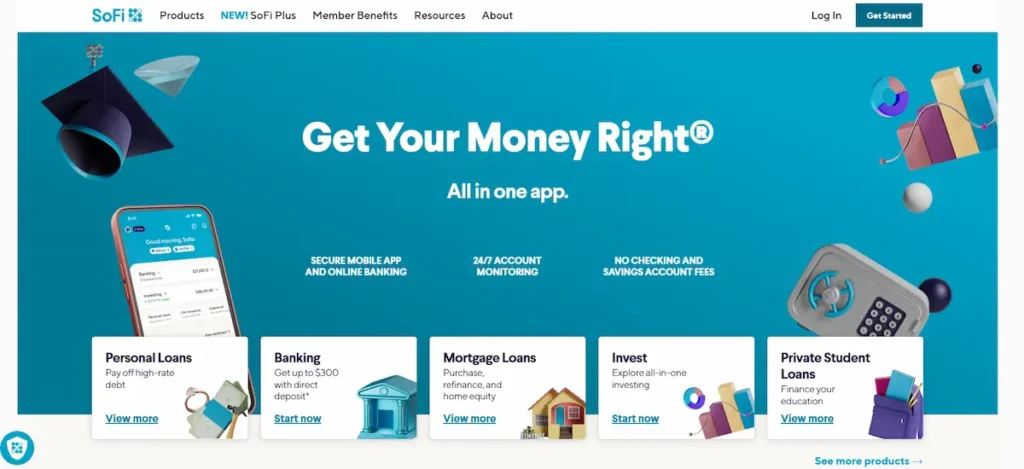
The platform’s UX seamlessly integrates a wide range of services, from student loans and mortgages to online banking and investing, all within a cohesive user interface.
SoFi excels by incorporating personalization and gamification, such as progress trackers and rewards, to keep users engaged and empowered on their journey to financial independence.
Betterment
Betterment offers a masterclass in simplicity for robo-advisors. Its UX uses clean, elegant data visualizations to take the complexity out of investing.
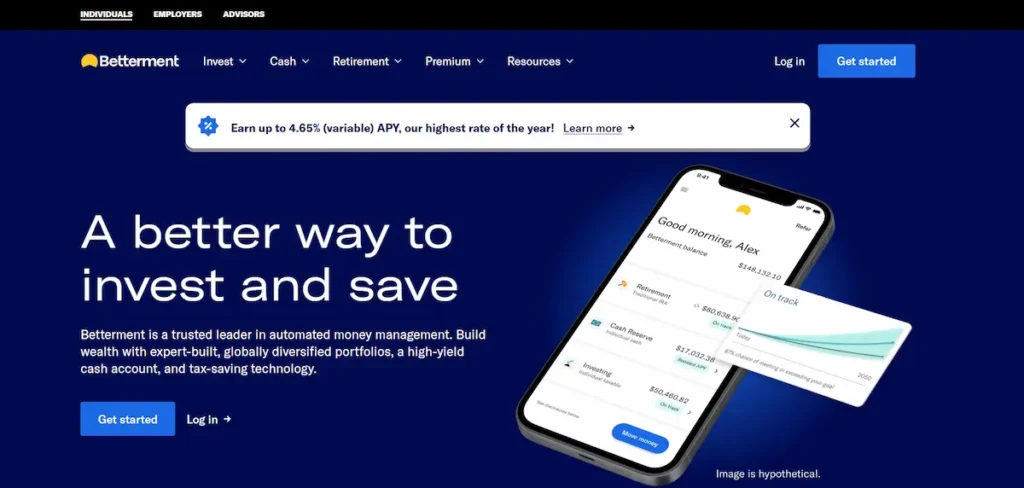
Users can effortlessly see how their mutual funds and other investments perform through clear charts and graphs. The user flow for setting up an account is highly streamlined, a key feature that reduces friction and encourages new investors to start.
Ally Bank
A globally recognized leader in digital banking, Ally Bank’s intuitive, mobile-first website sets the standard for user experience.
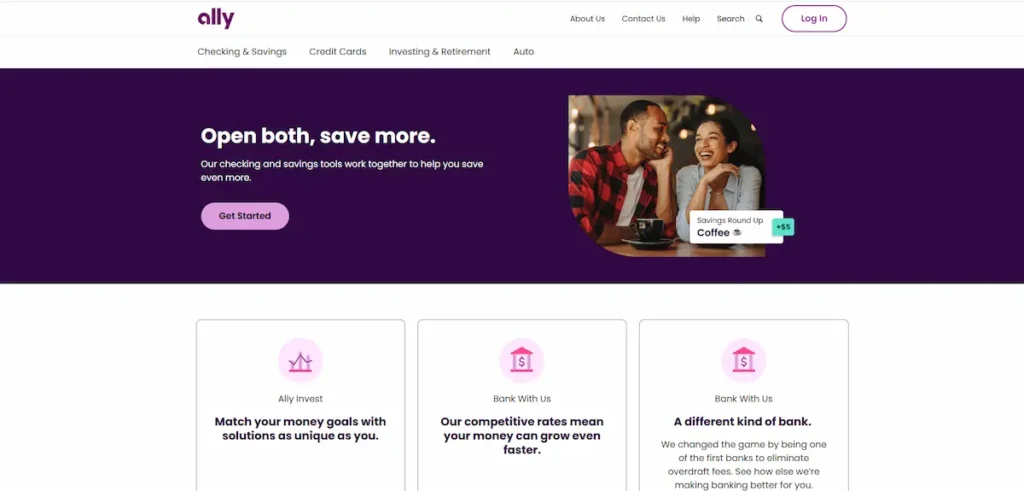
Its clean interface and straightforward messaging are designed to build trust, a crucial element for any financial services platform.
Ally Bank’s site offers a robust suite of services, including investment tools, all within a digital-first framework that prioritizes ease of use and accessibility.
Credit Karma
Credit Karma effectively gamifies financial health, turning a typically stressful topic into an engaging experience. Its UX is built on a clear, motivating progress-based system that makes checking your credit score and improving your financial freedom feel rewarding.
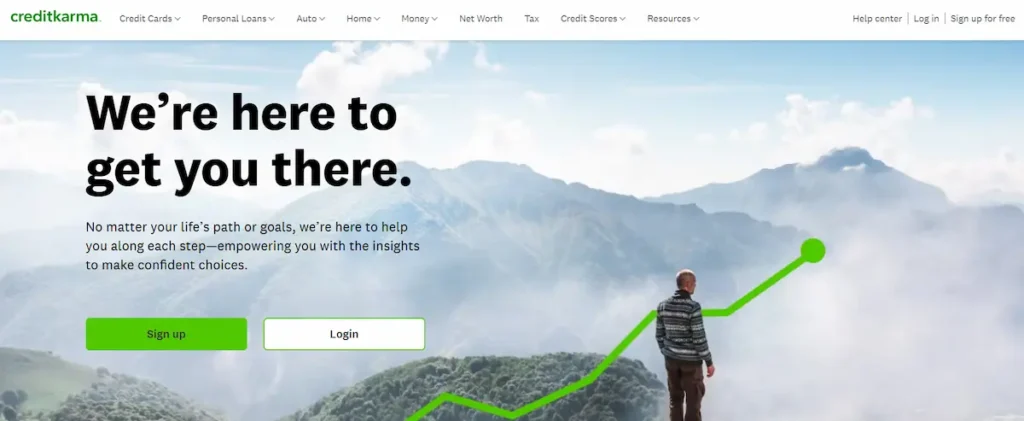
The platform’s use of personalized recommendations and social proof (like user testimonials) has made it a popular and reliable choice for millions of users looking for personal finance advice.
Morgan Stanley
Morgan Stanley‘s website projects authority and sophistication for a premium wealth management firm. The UX is intentionally minimalist, focusing on delivering high-value investing insights to its high-net-worth clients.
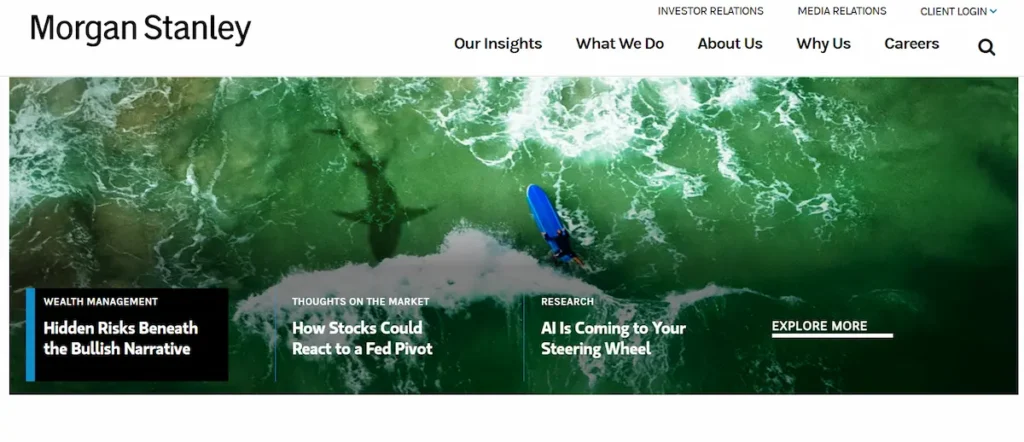
The design perfectly balances traditional elegance and modern responsiveness, catering to a discerning audience that values heritage and a seamless digital experience.
Edward Jones
Edward Jones successfully merges a traditional, financial advisor-centric approach with a modern digital experience.
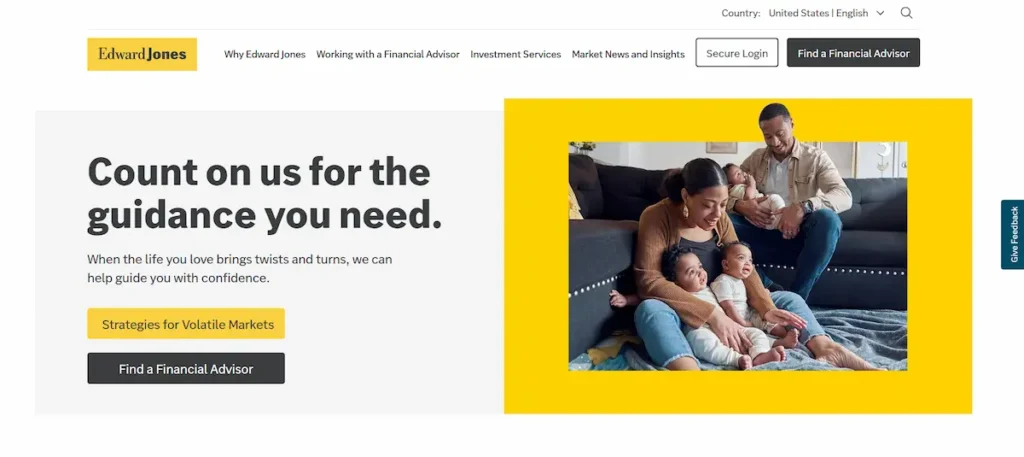
The website’s UX is specifically designed to support the crucial client-advisor relationship. It provides a clean, easy-to-use platform for clients to access their accounts while emphasizing the personal connection and trust that define the firm’s model.
KeyBank
KeyBank demonstrates how a community bank can execute a successful digital transformation. Its simple, secure, and user-friendly site makes essential online banking tasks intuitive for individual and small business customers.
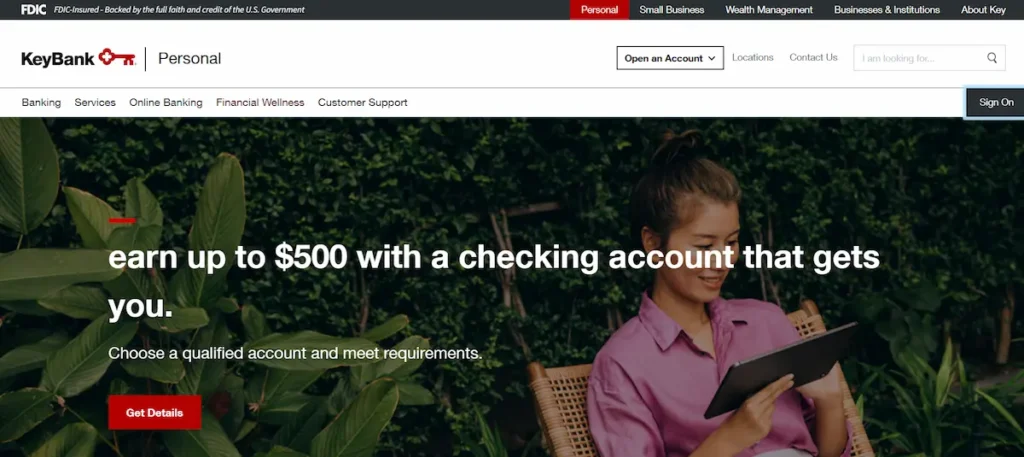
The UX is built around clear calls-to-action and a straightforward navigation system that guides users efficiently.
Stash Wealth
With a focus on a younger audience, Stash Wealth’s design is vibrant and accessible. The platform uses simplified language and visual aids to educate visitors about the stock market and help them start their investing journey.
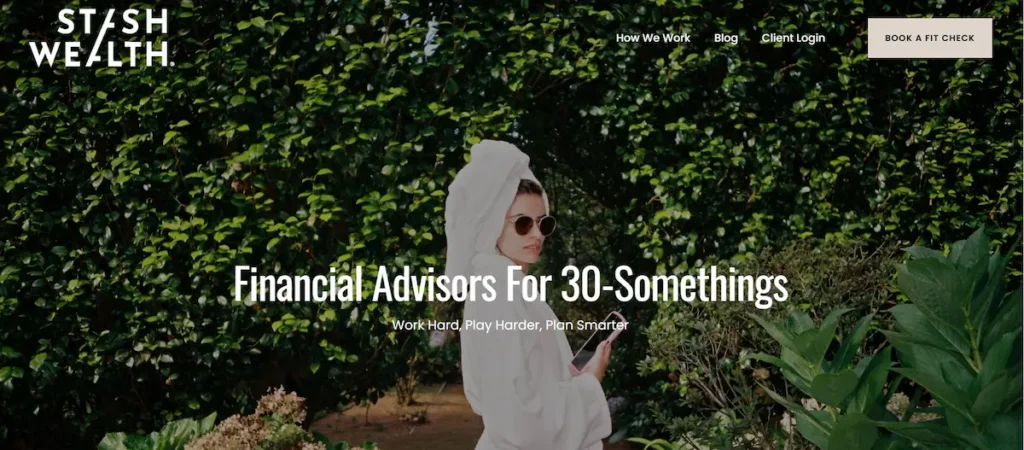
This approachable UX allows users to achieve financial independence by making investing feel less intimidating and more achievable.
Francis Financial
As a boutique firm, Francis Financial’s website uses a clean layout and strong social proof to build trust. The UX is straightforward and professional, designed to make clients feel confident and supported.
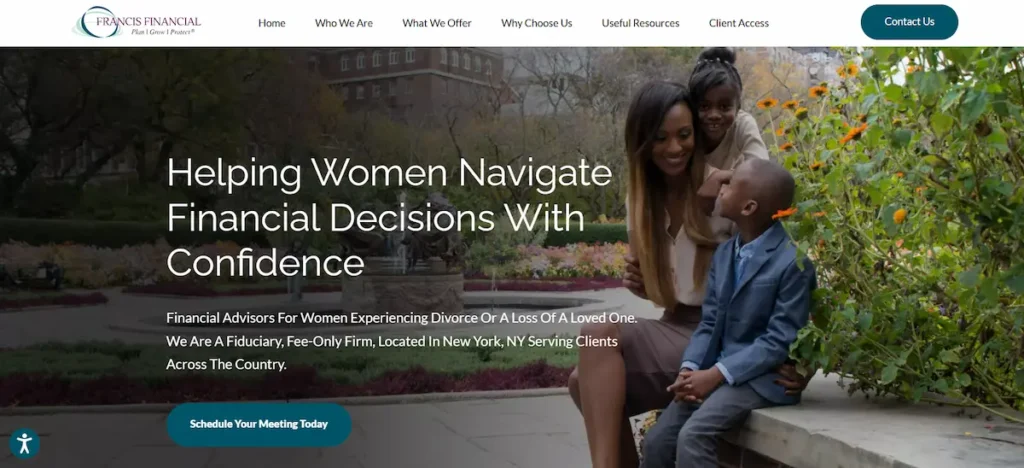
Its design priorities center on creating a personal and reliable experience, paramount for wealth management services.
Barclays
Barclays serves as an outstanding example of a financial service website built for a global audience. Its design combines clarity, accessibility, and sophisticated data presentation, offering users real-time market briefs and authoritative insight.
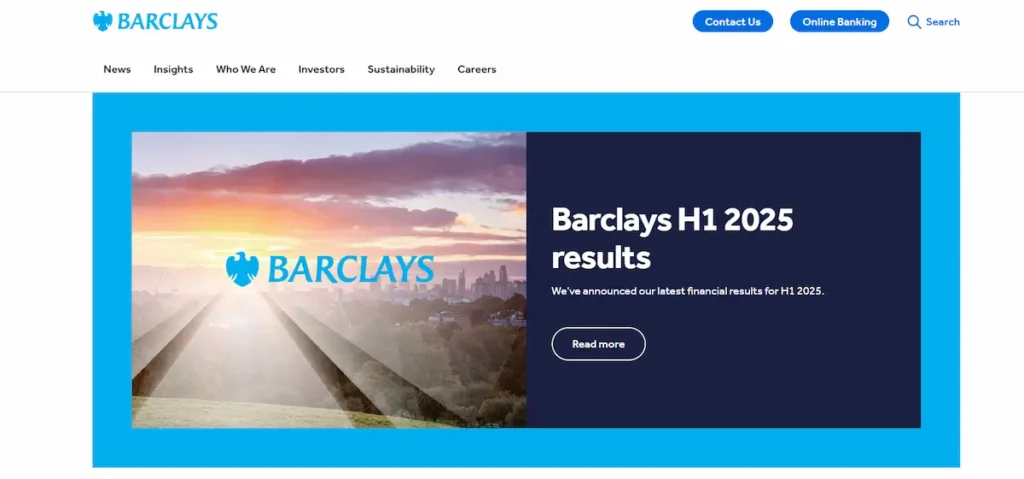
With intuitive navigation and responsive interfaces, Barclays helps individual investors and business leaders stay informed about the latest financial trends while providing actionable ideas for achieving financial independence in an interconnected world.
UX Design Trends Shaping the Best Financial Service Websites
The digital landscape is always evolving. Here are the top fintech UX trends for 2025 that are shaping the best financial service websites.
AI-Powered Personalization and Chatbots
Artificial intelligence is no longer a gimmick; it’s a core component of modern UX. AI-powered chatbots provide instant, 24/7 support, helping users with everything from checking their balance to getting personal finance information.
Beyond chatbots, AI analyzes user behavior to provide personalized investment strategies and tailored financial planning advice. This level of personalization makes the experience feel highly relevant and supportive.
Biometric Authentication and Security UX
Security is paramount in finance. Biometric authentication, such as fingerprint and facial recognition, is now a standard feature. The key UX challenge is to integrate this security seamlessly.
The process must feel fast and effortless, while also reassuring the user that their financial data is completely secure. This delicate balance builds immense trust.
Mobile-First and App-Like Web Experiences
With a majority of traffic coming from smartphones, a financial services website must be designed for mobile from the ground up. This trend focuses on creating a responsive web experience that feels as fluid and fast as a native mobile app.
Buttons are larger, navigation is simplified, and tasks like online banking are optimized for touch interactions. A seamless mobile experience is no longer a “nice-to-have”; it’s a “must-have.”
Interactive Dashboards and Data Visualization
Complex financial information can be intimidating. The best websites use interactive dashboards and clear data visualization to make it easy to understand.
Users can see their portfolio performance, spending habits, and financial goals in a visual, engaging format. Interactive charts and streaming charts turn static numbers into dynamic insights.
Gamification for Financial Education
Gamification uses game-like elements to make personal finance and financial news more engaging. Features like points, badges, and challenges can motivate users to set and achieve their financial goals.
This approach makes topics like saving and investing feel less daunting and more like a rewarding game. It helps users achieve financial independence while having a fun experience.
Minimalist Design, Clean Interfaces, and Dark Mode
A clean, minimalist design is a prominent trend. It reduces visual clutter, making the interface easier to navigate and helping users focus on the most important information.
Many modern platforms also offer a dark mode, which is not only aesthetically pleasing but also reduces eye strain for users, especially during late-night sessions of world investing.
Accessibility-First Design for Inclusivity
Accessibility is a key design principle for 2025. It means building a website that is usable by people of all abilities.
This includes providing high-contrast color schemes, supporting screen readers, and ensuring a clear, logical navigation structure. An accessible financial services website demonstrates a commitment to inclusivity and expands its reach to a wider audience.
Core UX Principles for Financial Service Website Design
Beyond the latest trends, certain core UX principles are timeless and essential for any successful financial website design.
Building Trust Through Visuals and Messaging
Trust is the foundation of any financial relationship. Your website’s design must immediately convey professionalism and security. This means using high-quality imagery, a consistent brand identity, and clear, honest messaging.
Including social proof like testimonials, security badges, and professional certifications reinforces this trust. Every element, from the hero image on the home page to the font choices, contributes to the overall perception of reliability.
Simplifying Complex Financial Information
The financial world is full of jargon. A great finance website is a translator, simplifying complex concepts into simple, digestible information.
This involves using plain language, easy-to-read charts, and interactive tools that explain how stock market trends or mutual funds work. The goal is to educate visitors and empower them to make informed decisions without feeling overwhelmed.
Creating Intuitive and Seamless User Flows
User flows must be seamless and intuitive, from signing up for a new account to making a transfer. A good UX ensures that users can complete their tasks with minimal clicks and no confusion.
Progress indicators, clear calls-to-action, and well-organized forms are all crucial for a positive experience. This is what separates a frustrating website from a truly great finance website.
Maintaining Cross-Platform Consistency
Today, users interact with brands across multiple devices. The UX must be consistent whether a user is on their desktop, tablet, or smartphone.
This consistency builds familiarity and trust. It allows a user to start a task on one device and finish it on another without any friction. A strong design system ensures a cohesive experience across all platforms.
Actionable Ideas to Improve Your Financial Service Website
Ready to optimize your platform? Here are some actionable ideas to get you started.
- Conducting UX Audits and User Research: The first step is understanding your users. A UX audit can identify usability issues on your site. Follow this with user research, such as surveys and interviews, to pinpoint specific pain points and needs. This data is invaluable for making targeted improvements.
- Prioritizing Essential Features: Not all features are equally important. Focus on the ones that provide the most value to your users. This could include interactive calculators, a robust account management dashboard, or a secure messaging tool. By prioritizing these essential features, you can make the biggest impact on the user experience.
- Phased Implementation and Testing: Avoid a massive, high-risk redesign. Instead, implement changes in phases. Use A/B testing to compare different design elements, layouts, and copy. This data-driven approach ensures that every change you make is a genuine improvement, not a guess.
- Balancing Innovation with Compliance and Accessibility: The financial services industry operates under strict regulations. As you innovate, work closely with your legal and compliance teams. New features must adhere to all security and accessibility standards. This balance is key to building a trustworthy and responsible financial services website.
- Leveraging WordPress and Modern Design Systems: For many small businesses, a platform like WordPress can be a powerful tool. Modern themes and plugins are built with accessibility and mobile responsiveness in mind. By using a robust design system, you can build a professional, scalable website that stands alongside the best websites in the industry.
Conclusion: Designing the Best Financial Service Websites
Designing the best financial service websites in 2025 is all about putting the user first. It’s about moving beyond basic functionality to create an intuitive, secure, and empowering experience.
The trends we’ve explored, from AI-powered personalization to minimalist design, are not just fads. They are the future of UX design finance.
Ultimately, a great finance website is built on a foundation of trust. Design is the tool that communicates that trust, simplifies complex information, and creates a seamless user journey.
By focusing on core UX principles and embracing modern trends, any company in the financial services industry can build a platform that not only meets but exceeds customer expectations. A successful financial website design is the ultimate key to user retention and long-term success.
FAQs on the Best Financial Service Websites
What makes the best finance websites stand out?
The best finance websites combine intuitive financial website design with trustworthy content. They feature authoritative insight, market briefs, and original articles from dedicated journalists who generate hundreds of stories daily. These platforms help users stay informed about the latest financial trends while offering actionable ideas for enjoying financial independence.
Which financial news websites are trusted by the world’s business leaders?
Globally recognized magazines like the Financial Times and brands such as Thomson Reuters are among the most trusted financial news websites. They offer unlimited access to finance news, feature in-depth analysis, and provide an international mix of perspectives that top world investing leaders rely on.
How do financial websites affect investing decisions?
Finance websites and investing insights providers influence decisions by delivering real-time updates, market briefs, and investment strategies. These platforms offer actionable ideas for both new investors and seasoned professionals, helping them respond quickly when news affects the financial markets.
What are some examples of top investing insights providers online?
Top investing insights providers include Bloomberg, Financial Times, and Reuters Media Division. These recognizable brands feature authoritative insight, globally relevant data, and marketing topics that help readers make informed financial decisions.
Why should financial advisors and individual investors rely on financial news websites?
Financial advisors and investors depend on financial news websites to stay informed about the latest financial trends. By accessing authoritative analysis from globally recognized sources, they gain clarity on how market shifts may impact portfolios and long-term strategies.
